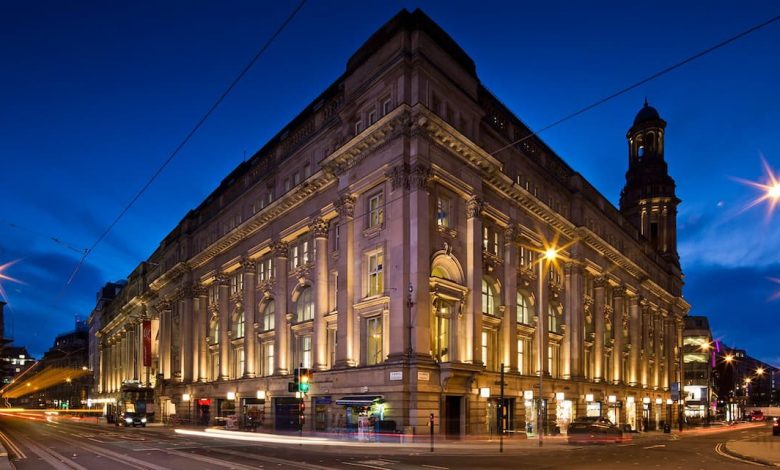The Manchester Cotton Exchange: Weaving the Threads of Commerce and History

In the heart of Manchester’s bustling cityscape lies a building that whispers tales of a bygone era, a time when cotton was king and trade flowed like a river. The Manchester Cotton Exchange, a majestic testament to the city’s industrial prowess, stands as a symbol of innovation, prosperity, and the unbreakable ties between commerce and culture. In this comprehensive exploration, we delve deep into the intricate history and significance of the Manchester Cotton Exchange, tracing its origins, architectural grandeur, and lasting legacy.
Chapter 1: The Rise of Cottonopolis
Birth of a Textile Empire: As the Industrial Revolution swept through England, Manchester emerged as the epicentre of the cotton industry, earning the moniker “Cottonopolis.” The city’s mills churned out cotton goods that were sought after worldwide. The demand for raw cotton, the exchange of goods, and the need for fair pricing led to the creation of a hub for cotton trading.
Chapter 2: A Marketplace of Dreams
Inception and Genesis: The Manchester Cotton Exchange was established in 1823, with a vision to provide a centralized platform where merchants, buyers, and sellers could gather to conduct business. The need for a regulated marketplace became increasingly apparent as the cotton trade flourished, giving rise to a structure that would not only facilitate transactions but also set standards for quality and pricing.
Architectural Marvel: The iconic Manchester Cotton Exchange building, located on Oldham Street, was designed by Alfred Waterhouse and completed in 1897. A stunning example of Victorian Gothic architecture, the building’s façade boasts intricate carvings, elegant spires, and ornate detailing that pay homage to the industry it served.
Chapter 3: A Hub of Activity
The Trading Floor: The heart of the Manchester Cotton Exchange was its trading floor—a hive of activity where cotton merchants, brokers, and traders converged. The trading floor bustled with life as deals were struck, prices were negotiated, and the fate of cotton bales was determined. The Exchange was not only a marketplace but also a place where relationships were forged, and the pulse of the cotton industry was felt.
Social Fabric: Beyond its economic significance, the Manchester Cotton Exchange played a role in the social fabric of the city. It was a meeting place, a hub of information exchange, and a source of pride for the community. The Exchange’s lavish banquets and events were a testament to the camaraderie that flourished among Manchester’s cotton elite.
Chapter 4: Winds of Change
Changing Times: The mid-20th century marked a turning point for the cotton industry, with changing global dynamics and economic shifts impacting Manchester’s cotton trade. As the industry waned, the Exchange’s role began to shift, and the once-bustling trading floor saw a decline in activity.
Chapter 5: A Legacy Preserved
Architectural Heritage: Despite the changes in the cotton industry, the Manchester Cotton Exchange building stands as a testament to Manchester’s industrial past. The building’s grandeur has been lovingly preserved, and it continues to captivate visitors with its stunning architecture and historical significance.
Adaptation and Revival: Today, the Manchester Cotton Exchange building has found new life as a dynamic space for offices, retail, and cultural activities. The echoes of its past continue to reverberate through the halls, reminding all who enter of the city’s rich history and enduring legacy.
Conclusion: Weaving the Threads of Time
The Manchester Cotton Exchange is more than just a building; it’s a tangible link to a time when Manchester’s cotton trade fueled the city’s economic growth and global influence. Its story is a reminder of the resilience and adaptability that characterize cities shaped by industry. As we stand in awe of its architectural magnificence and historical significance, we’re reminded that the Manchester Cotton Exchange is not just a relic of the past, but a living testament to the interplay of commerce, culture, and the relentless march of progress.
